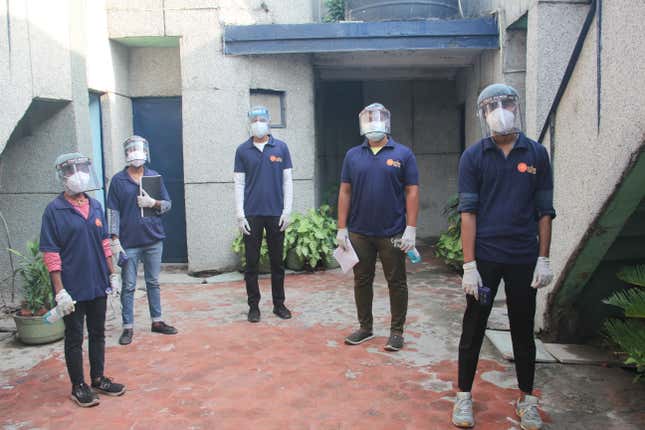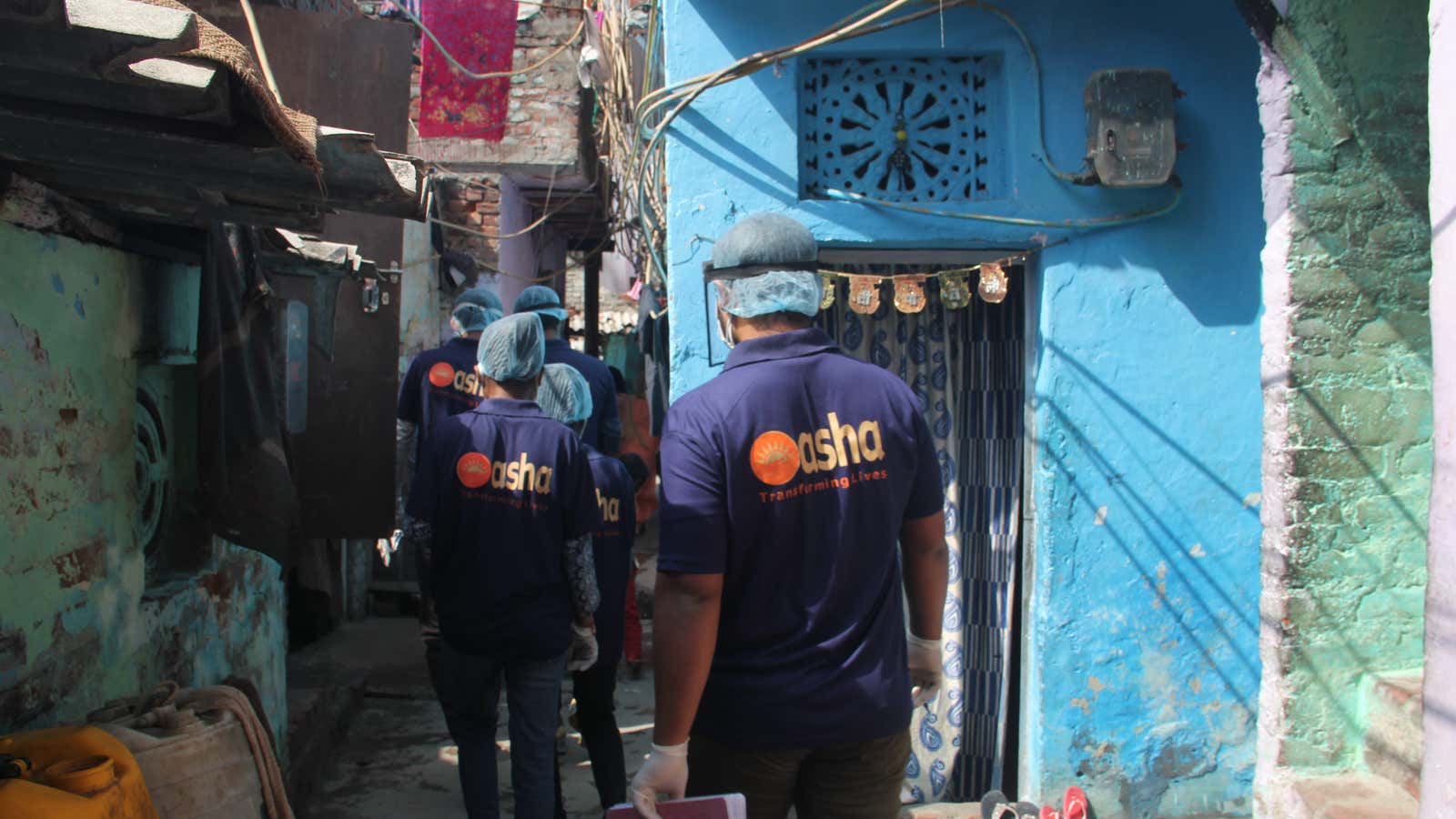In the last week of April, 17-year-old Ashish Das, a resident of the Kalkaji slum in south Delhi, started showing symptoms of Covid-19. Shortly thereafter, his sister (21) and mother (41) also fell sick. They all got tested on May 2 and received their positive reports on May 3. They decided to isolate themselves at home.
Within two weeks Das’s mother and sister had recovered and tested negative but the teenager was still unwell. His symptoms like fever, diarrhoea, and breathing difficulty, did not let up.
Meanwhile, Asha “warriors”—local college-going slum residents who volunteer with a 30-year-old non-government organisation (NGO), Asha—were patrolling the neighbourhood as they had been doing six days a week since the initial Covid-19 outbreak in March 2020. Das’s cases went unnoticed for some time because the “family were afraid and had lied about their situation.” However, when Das did not recover, the family panicked and informed the Asha team, who began teleconsulting with the NGO’s founder, paediatrician, and social worker Kiran Martin, and providing home care.
Das, who has Down’s syndrome, lives with his mother (a housewife), father (a security guard), and sister. Their monthly household income is Rs9,000 ($124). To support Das’s treatment, Asha has supplied the family with an oxygen concentrator at home along with a nebulizer, medicines, vitamins, and more.
Das was one of over a thousand patients Asha tended to during the second wave of Covid-19 in India that started in March and is yet to fully end.
While the NGO was at the forefront of Covid relief even in 2020, the work was largely limited to providing grocery and monetary assistant to those who faced the financial burden of the lockdowns. This time, though, “Covid cases are everywhere, in all the slums,” Martin told Quartz in a phone interview on May 25. “We probably had 10 times that number of cases we saw which went undetected because there is stigma, and there is a lack of RT-PCR tests.”
A day fighting Covid-19 in Delhi’s slum
Even as cases decline in India’s capital, the Asha team have not let up on their daily vigilance.
On May 21, Quartz virtually tagged along with a nine-member team of Asha volunteers—all local students aged around 18, including two women—as they covered 28 homes in the Kalkaji slum in New Delhi. Following is a hand-drawn map of the area this team covered on this day.
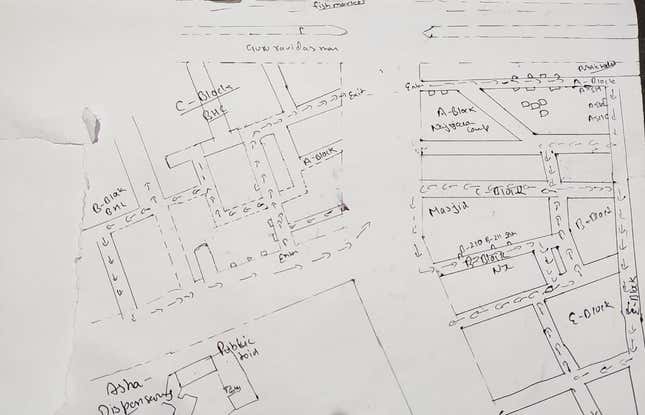
The area mostly has small one- or two-room houses where five to six family members live together. “Even I live in a slum home with five other family members, but we have no fear in going out and doing this work,” 20-year-old Prince Gautam told Quartz. “Our families even encourage us.”
On this particular day, the team didn’t find any new symptomatic cases, but there was still much to be done.
11:00 am: Workers get ready in their homes to leave for the NGO’s local office. This preparation includes wearing Covid-safety gear such as masks and gloves.
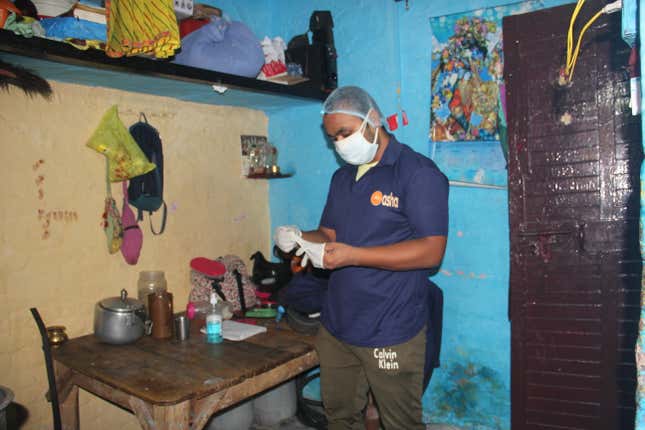
11:15 am: At the Asha centre, the workers are briefed about the areas they will be covering during the day. The volunteers carry the required medical equipment such as digital thermometers and oximeters during the daily rounds.
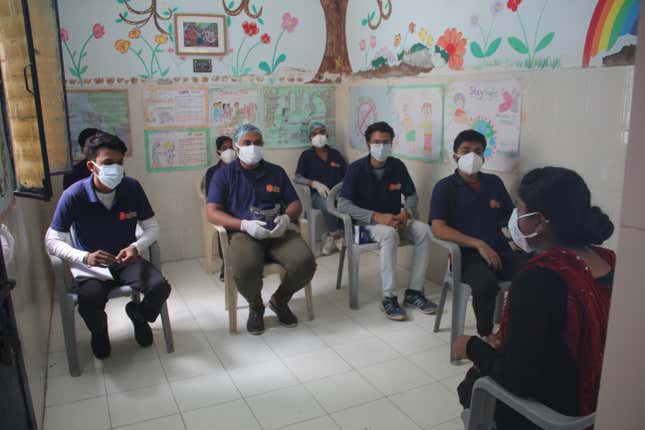
11: 35 am: The workers visit each and every home in the lanes designated for the day, checking the oxygen levels and temperature of all slum dwellers. The names and house numbers of slum dwellers who are showcasing Covid symptoms are noted down.
“It’s really hard to cover such a huge population,” said Martin. “The warriors have to be given a lot of credit for catching patients at the right time and saving their lives.”
On days when they find symptomatic patients, the volunteers help people get RT-PCR tests done. Vitamins and paracetamols are distributed for free as precautions.
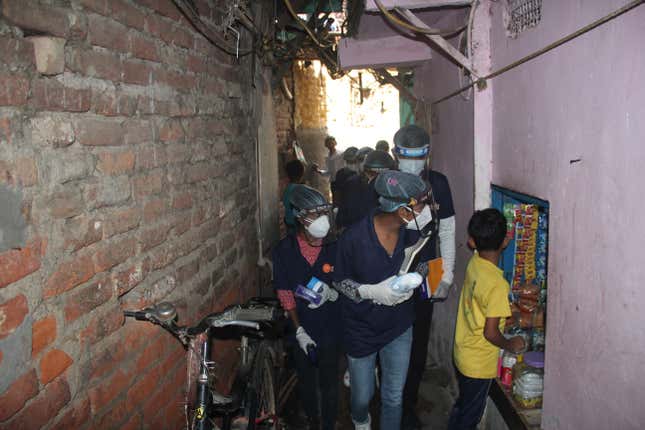
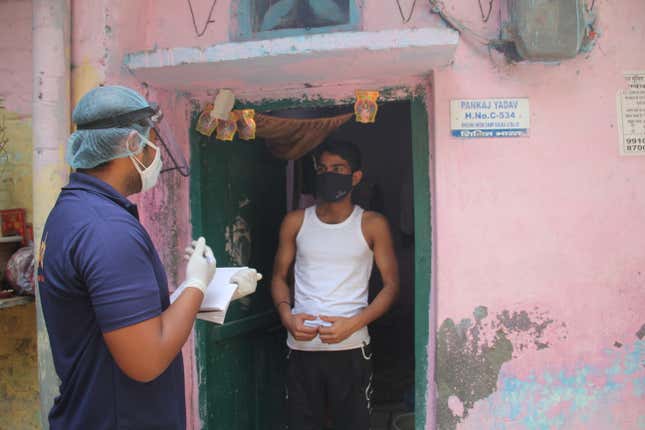
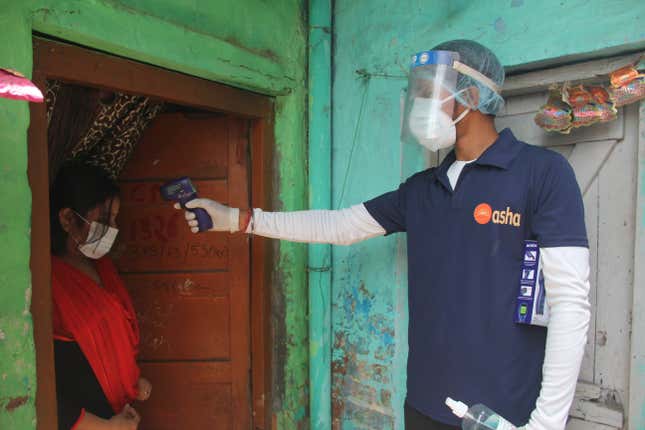
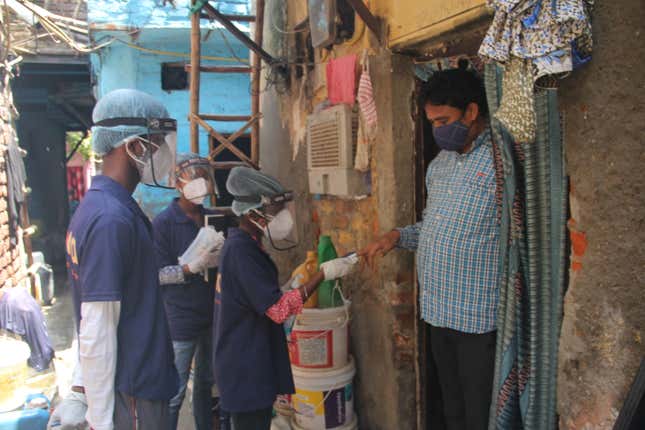
These volunteers even provide post-Covid care like checking for hypertension, anemia, and malnutrition among the recovered and their families.
Last year, the team distributed 400-calorie laddoos to make sure people weren’t falling prey to starvation and malnutrition. They plan to restart this endeavour.
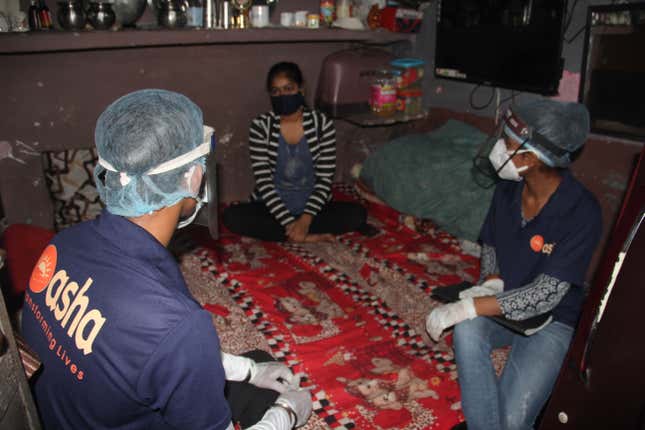
1:00 pm: The volunteers visit the slum’s elderly population (those in the 45+ age group), to encourage them to get vaccinated. They note down names to help people get registered for the vaccine.
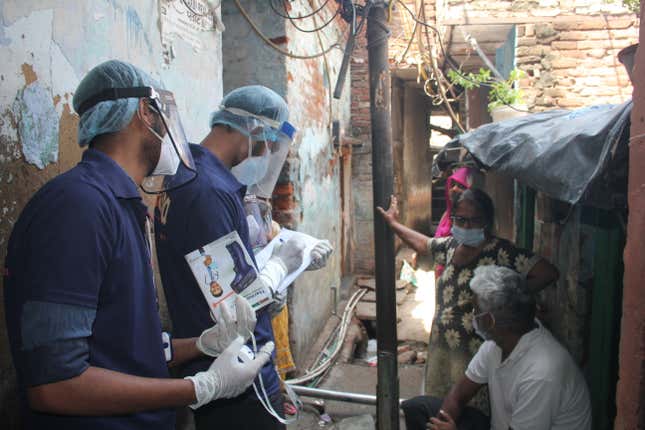
“People get scared when it comes to the vaccination,” Lakshdeep, 20, told Quartz. “It became a myth that people are dying from vaccines so many of them tell us to go away when we try to register them.”
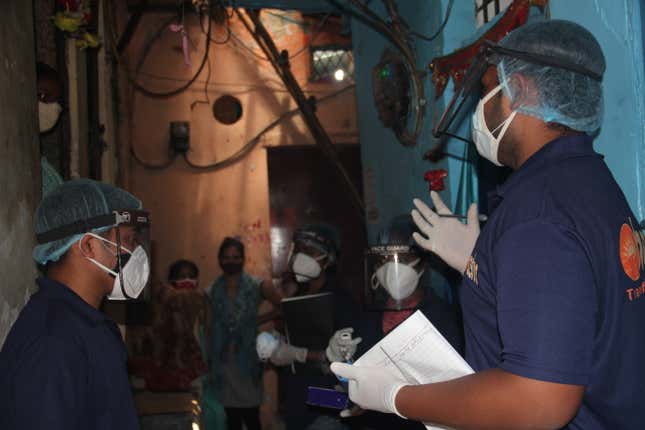
2:00 pm: Lunch break.
2:30 pm: The team gets dressed in full PPE kits and leaves to visit Covid patients at their homes. If a patient still shows severe symptoms after six days (no matter their testing status or oxygen levels), their case is escalated to Martin so swift action can be taken.
On this day, Das is the only active case. They nebulize him and provide medicines, nutrition advice, and emotional counselling.
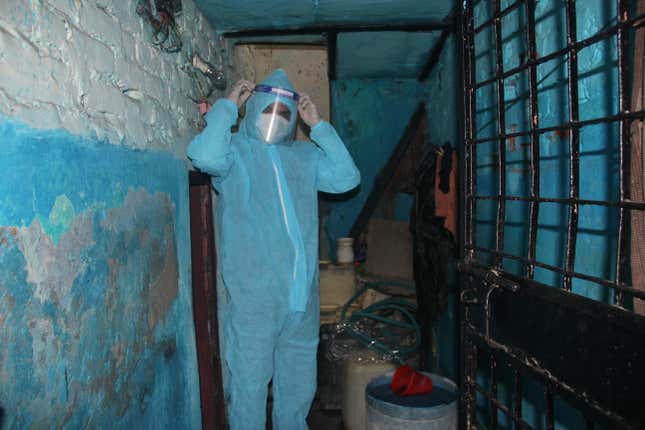
Initially, the Asha team dealt with even the most critical cases without oxygen. “I did not give oxygen because I had no oxygen,” said Martin. Instead, she relied on nebulising patients as well as starting them on steroids and anticoagulants. “We gave them all the intravenous antibiotics and other things they need—we didn’t give remdesivir because it anyway didn’t help and wasn’t available—and patients responded wonderfully,” Martin added.
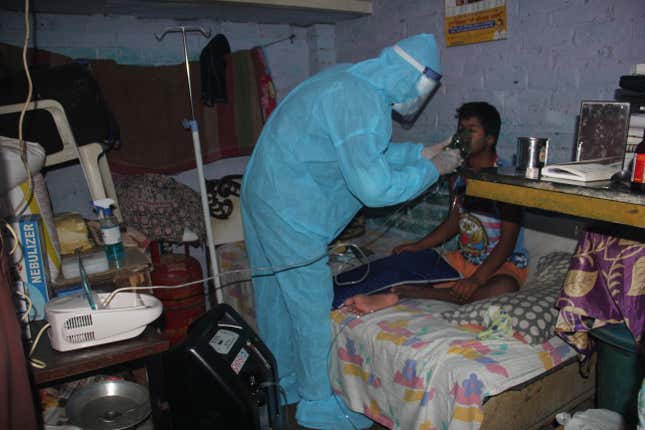
4:00 pm: Asha workers patrol their slum community while distributing masks and engaging with slum dwellers on Covid safety guidelines and protocols to follow.
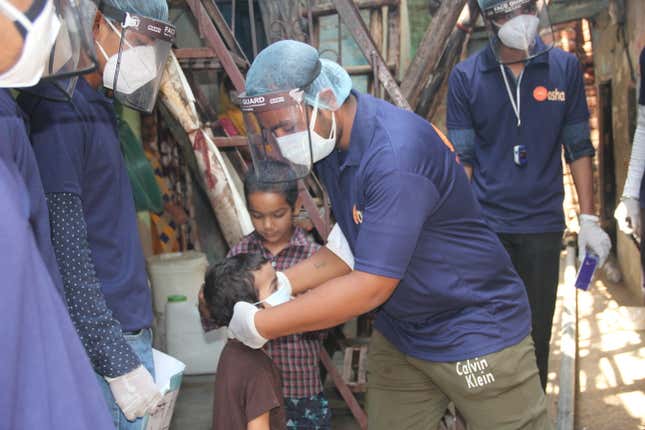
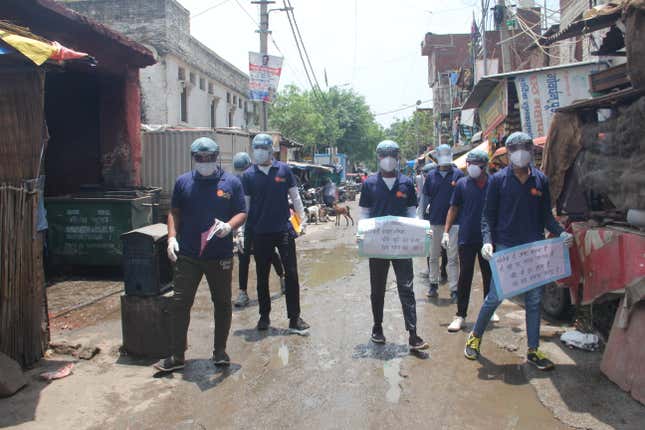
To fund all its activities, Asha raised funds from established partners in Australia, the UK and the US, as well as corporates in India.
Martin, who is a graduate of University of Delhi’s Maulana Azad Medical College, also tapped into her alumnus network and several people stepped up to donate money, ration, and masks.
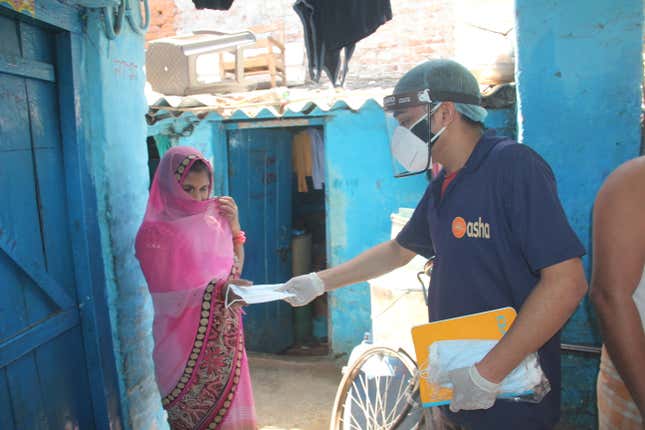
4:45 pm: The team heads back to the Asha centre and brief the office team on their day’s work.
